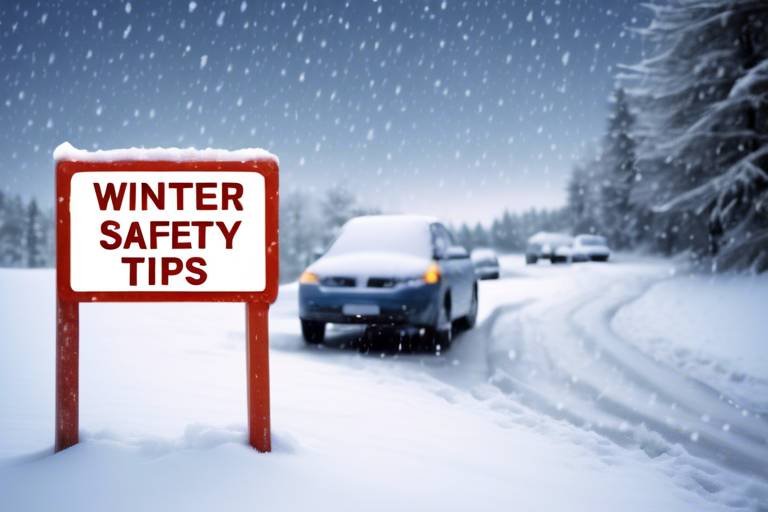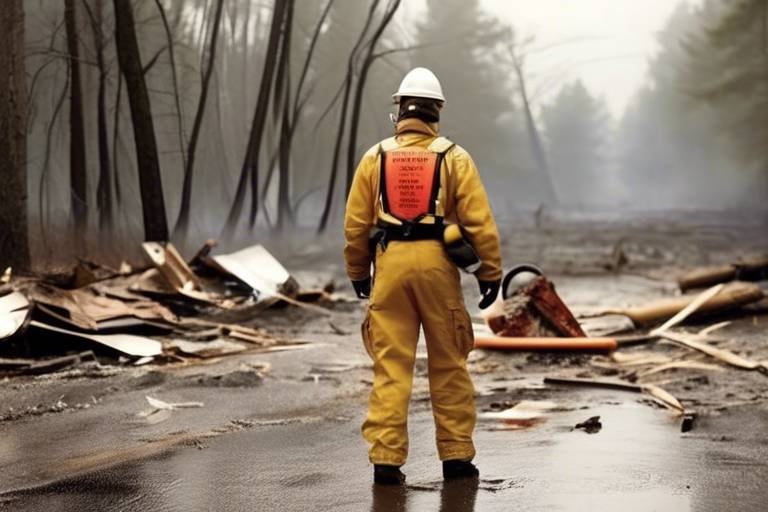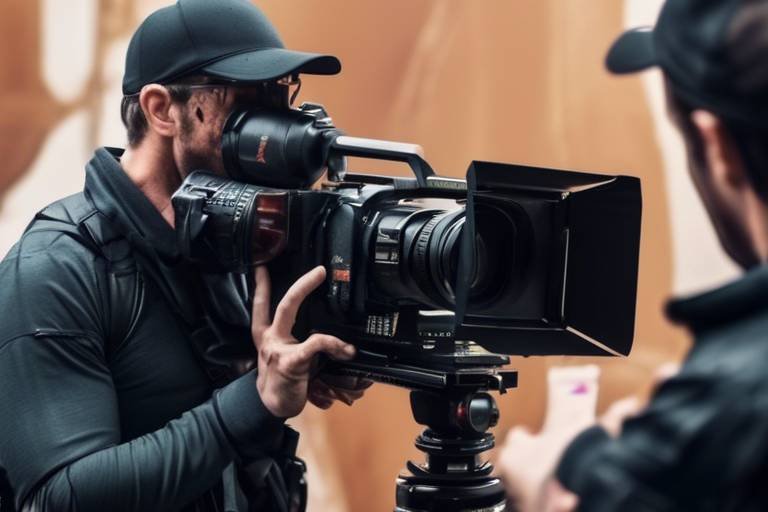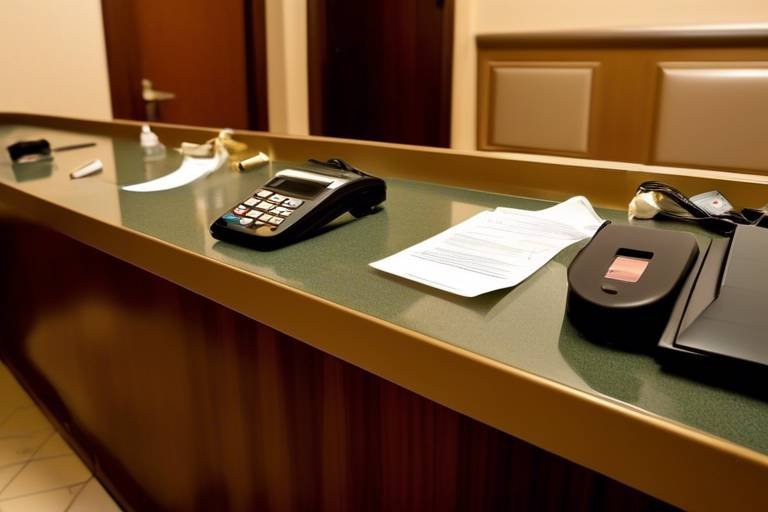Precautions for Cyclists - Staying Safe on the Road
Cycling is not just a mode of transportation; it’s a thrilling adventure that combines exercise, freedom, and the joy of exploring the outdoors. However, with this excitement comes the responsibility of ensuring your safety on the road. Whether you’re a seasoned cyclist or a beginner, understanding the precautions necessary to stay safe is crucial. In this article, we will delve into essential safety measures that every cyclist should adopt to minimize risks while riding. From choosing the right gear to understanding traffic rules and maintaining your bicycle, we’ve got you covered!
When it comes to cycling, the right gear can make all the difference. Think of it as your armor in the battle against road hazards. A quality helmet is your first line of defense, protecting your head in case of a fall. Make sure it fits snugly and meets safety standards. But don’t stop there! Wearing reflective clothing is equally important. It’s like wearing a spotlight that makes you visible to drivers, especially during dusk or dawn. In addition to these essentials, consider investing in gloves, padded shorts, and cycling shoes that provide comfort and enhance your performance on the bike. Remember, being seen is just as crucial as being protected!
Familiarizing yourself with traffic laws is vital for cyclists. Just like any driver, cyclists must obey the rules of the road to ensure their safety and the safety of others. This means understanding the signs, signals, and right-of-way rules that govern traffic. For instance, did you know that in many places, cyclists are required to ride in the same direction as traffic? Not following this simple rule can lead to dangerous situations. Here’s a quick rundown of key regulations:
- Always stop at stop signs and red lights.
- Use bike lanes when available, but be mindful of pedestrians.
- Signal your intentions to other road users.
Understanding who has the right of way can prevent accidents. Imagine a busy intersection where cars are zooming by, and you’re on your bike trying to navigate through. Knowing when to yield and when to assert your right of way is essential. For example, if you’re at a stop sign and a car is approaching from your left without a stop sign, it’s your responsibility to yield. On the other hand, if you’re in a bike lane and a vehicle is trying to merge into it, you have the right of way. Being aware of these scenarios can significantly reduce the chances of collisions.
Navigating intersections and roundabouts safely is critical. These areas can be particularly tricky for cyclists, as they are often the site of accidents. When approaching an intersection, always slow down and look for any oncoming traffic. If you're at a roundabout, remember to yield to traffic already in the circle. A good tip is to make eye contact with drivers; it’s a simple yet effective way to ensure they see you before you proceed.
Proper lane positioning enhances visibility and safety. Think of it like positioning yourself in a game of chess; the right move can protect you from being taken out. When cycling, aim to ride about a meter away from parked cars to avoid getting doored. Position yourself in the lane where you feel most comfortable, typically towards the center, where you can be seen by drivers. Always be aware of your surroundings and adjust your position as necessary to remain safe.
Effective communication with drivers is essential. Just like in a conversation, clear signals can prevent misunderstandings. Using hand signals to indicate turns and stops is not just a courtesy; it’s a safety measure. When you’re turning left, extend your left arm straight out. For a right turn, you can either extend your right arm or bend your left arm upward. To signal a stop, simply extend your left arm downward. These simple gestures can significantly improve road safety for cyclists and help build a better relationship between cyclists and motorists.
Regular maintenance of your bicycle is key to ensuring a safe ride. Just like a car needs regular check-ups, your bike requires attention too. Neglecting maintenance can lead to mechanical failures that might result in accidents. Start with a pre-ride checklist: check your brakes, tires, and gears. Keeping your bike in top condition is not just about performance; it’s about your safety on the road.
Checking tire pressure and tread is vital for safe cycling. Think of your tires as the shoes of your bike; if they’re worn out or improperly inflated, your ride will be uncomfortable and unsafe. A quick way to check tire pressure is to press down on the tire; it should feel firm. Also, inspect the tread for any signs of wear or damage. Properly inflated tires not only improve your ride quality but also enhance your control over the bike.
Functional brakes and gears are necessary for safe cycling. Imagine riding downhill without brakes – it can be terrifying! Regularly test your brakes by squeezing the levers to ensure they engage properly. As for gears, make sure they shift smoothly; if not, it could lead to a dangerous situation when you need to change speed quickly. A well-maintained bike is a happy bike, and it ensures a safer ride every time you hit the road.
1. What should I do if I encounter aggressive drivers?
Stay calm, avoid confrontation, and maintain your lane. It’s essential to prioritize your safety over proving a point.
2. How often should I maintain my bike?
Regularly check your bike before each ride and perform a more thorough maintenance check at least once a month.
3. Is it necessary to wear a helmet?
Absolutely! Wearing a helmet significantly reduces the risk of head injuries in case of an accident.
4. Can I ride my bike at night?
Yes, but make sure you have proper lights and reflective gear to ensure you are visible to others.
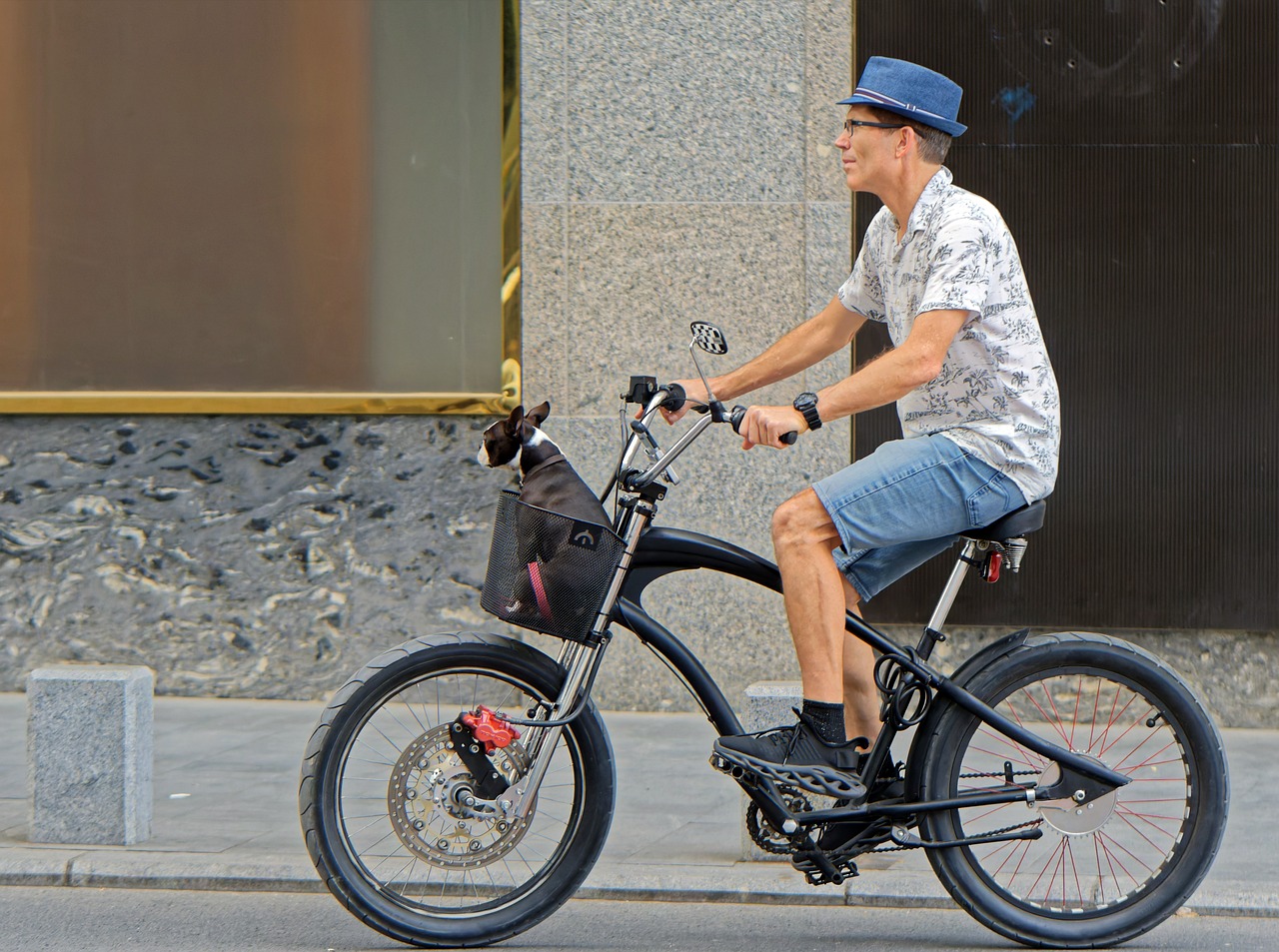
Choosing the Right Gear
When it comes to cycling, the right gear can make all the difference between a safe ride and a risky adventure. Think of it as your armor against the unpredictable world around you. First and foremost, a high-quality helmet is non-negotiable. It's not just a piece of equipment; it's your best friend on the road. A good helmet absorbs impact and protects your noggin in case of a fall. Make sure it fits snugly and meets safety standards. Remember, you wouldn’t go into battle without your shield, right?
Next up is reflective clothing. Visibility is crucial, especially during dawn, dusk, or night rides. Wearing bright colors can help you stand out against the backdrop of traffic. But don’t stop there! Consider gear with reflective strips or panels. These little details can catch the light and make you visible to drivers who may not be paying full attention. It’s like having a spotlight on you when you’re in the dark!
In addition to helmets and clothing, other essential equipment can significantly enhance your safety on the road. A good pair of cycling gloves can provide better grip and comfort, allowing you to maintain control over your bike. They also help to absorb shock, reducing fatigue on long rides. Moreover, investing in proper cycling shoes can improve your pedaling efficiency and comfort, making your rides smoother and more enjoyable.
| Gear Type | Importance | Key Features |
|---|---|---|
| Helmet | Protects your head | Impact-resistant, snug fit |
| Reflective Clothing | Enhances visibility | Bright colors, reflective strips |
| Cycling Gloves | Improves grip and comfort | Shock absorption, breathable material |
| Cycling Shoes | Boosts efficiency | Stiff soles, compatible with pedals |
Don’t forget about accessories that can make your ride safer. A rearview mirror can be a game-changer, allowing you to keep an eye on traffic without constantly turning your head. A bike light is also essential, especially for night rides. It’s like having a beacon that guides you through the darkness and alerts others to your presence. Investing in a quality lock is crucial as well; the last thing you want is to return from a ride only to find your bike has been stolen!
In summary, choosing the right gear is about more than just comfort; it’s about ensuring your safety and enhancing your cycling experience. Remember, every piece of equipment you select plays a role in keeping you safe on the road. So gear up, stay visible, and ride smart!
- What type of helmet should I buy? Look for a helmet that meets safety standards and fits snugly without being uncomfortable.
- How important is reflective clothing? Very! Reflective clothing significantly increases your visibility, especially in low-light conditions.
- Do I really need cycling gloves? Yes, they provide comfort, grip, and protection for your hands, especially on long rides.

Understanding Traffic Rules
When it comes to cycling, understanding traffic rules is not just a matter of following the law; it’s about ensuring your own safety and the safety of others on the road. Just like a well-oiled machine, the rules of the road function best when everyone knows their part. Imagine a dance where every participant knows their steps—this is how traffic should flow. So, let’s dive into the key regulations that every cyclist should be aware of.
First off, it’s essential to know that cyclists are considered vehicles on the road. This means that you are subject to the same laws as cars and trucks. For example, you must obey traffic signals and signs. Running a red light or ignoring a stop sign can lead to serious accidents. Think of it as playing a game of chess; every move counts, and one wrong move can have dire consequences.
Moreover, understanding the right of way can be a game-changer in preventing accidents. It’s crucial to know when you should yield and when you can assert your right to proceed. For instance, if you are at an intersection and a car is making a turn, you must be aware of whether they have the right of way. This understanding can save you from a potential collision. Here are some common scenarios:
- If you’re riding on a bike path and a car is entering from a driveway, the car must yield to you.
- At a four-way stop, the cyclist on the right has the right of way.
- When a pedestrian is crossing at a crosswalk, you must yield to them, regardless of whether you have the right of way.
Now, let’s talk about intersections and roundabouts. Navigating these areas can be tricky, but with the right approach, you can minimize risks. When approaching an intersection, always slow down and look both ways, even if you have the green light. In roundabouts, remember that vehicles already in the roundabout have the right of way. Signal your intentions clearly and make eye contact with drivers whenever possible to ensure they see you.
Another crucial aspect of traffic rules is lane positioning. Where you ride in relation to traffic can significantly impact your safety. Always ride as far to the right as practicable, but not so close to the curb that you risk being hit by opening car doors or debris. Positioning yourself in the lane can also make you more visible to drivers. When turning left, it’s often safer to take the lane and signal your intention, rather than squeezing into the right side of the road. This way, you’re more likely to be seen and less likely to be cut off.
Lastly, effective communication with drivers is paramount. Using hand signals is not just a courteous gesture; it’s a vital part of road safety. When you’re planning to turn or stop, signaling your intentions can help drivers anticipate your moves. This simple act can create a safer environment for everyone. Remember, a well-communicated ride is a safer ride!
Q: What should I do if a driver does not yield to me?
A: Stay calm and avoid confrontation. If it’s safe, yield and continue riding. Your safety is more important than being right.
Q: Are there specific laws for riding on sidewalks?
A: Yes, many places have laws regarding sidewalk cycling. Some areas allow it, while others do not. Always check local regulations.
Q: What should I do if I encounter a dangerous road condition?
A: If it's safe to do so, report the condition to local authorities. Avoid the area if possible until it’s fixed.
By understanding and adhering to these traffic rules, you’ll not only enhance your safety but also contribute to a more harmonious road environment. Remember, cycling is not just about the ride; it’s about sharing the road responsibly!
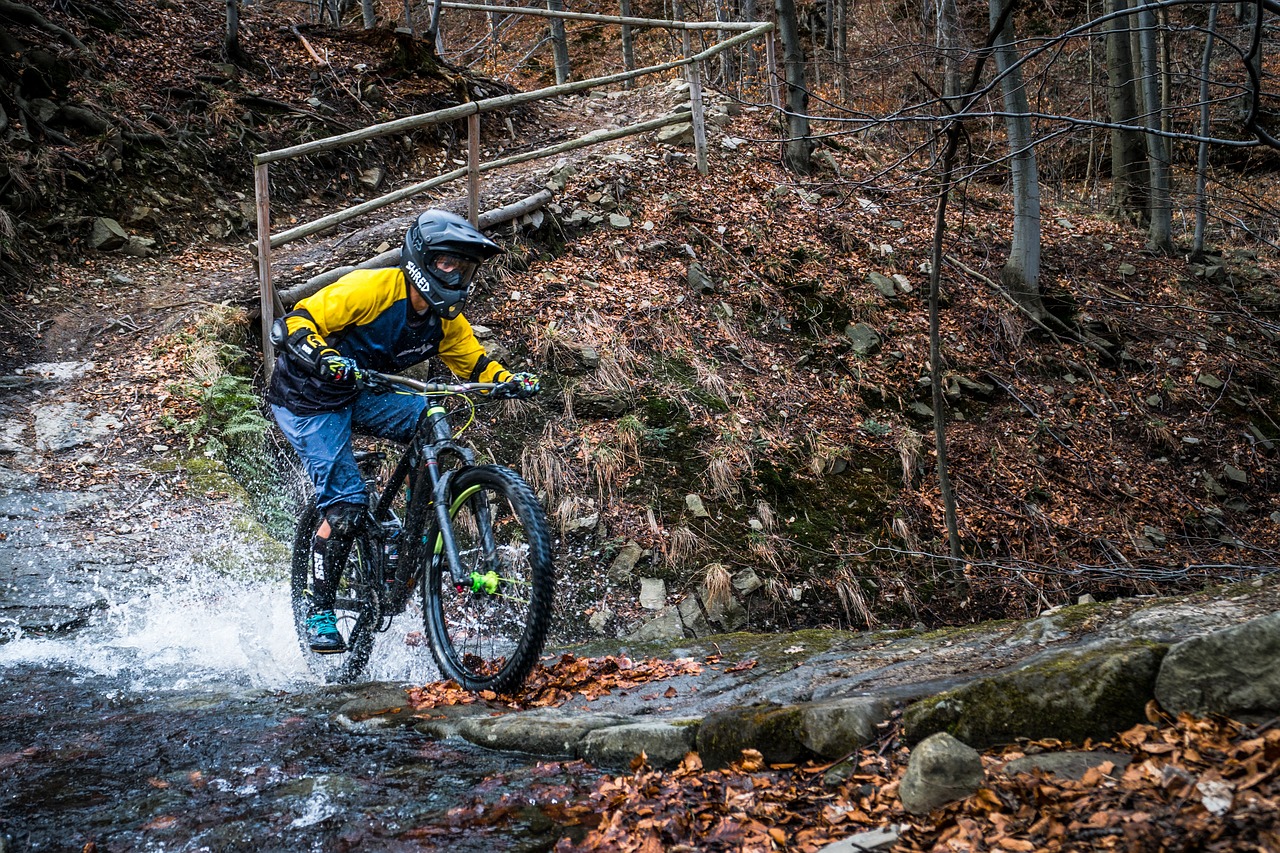
Right of Way
Understanding the concept of is crucial for cyclists aiming to navigate the roads safely. It’s like knowing the rules of a game; without them, you’re setting yourself up for confusion and potential accidents. Cyclists often find themselves in situations where they need to make quick decisions about who goes first, and this can be the difference between a smooth ride and a disastrous collision. So, let’s break it down!
In general, the refers to the legal right of a person or vehicle to proceed in a certain direction or to cross an intersection before others. For cyclists, this means being aware of when to yield and when to assert your right to move forward. Here are some common scenarios:
- At intersections: If you’re approaching a stop sign and another vehicle is already in the intersection, it’s essential to yield to them.
- When turning: If you’re making a left turn, you need to yield to oncoming traffic, including cyclists coming from the opposite direction.
- Pedestrian crossings: Always yield to pedestrians at crosswalks. They have the right of way, and respecting this rule keeps everyone safe.
Now, let’s talk about some specific situations that can arise on the road. When you’re at a roundabout, for instance, it’s important to know that vehicles already in the roundabout have the right of way. As a cyclist, you should approach cautiously, ensuring you’re aware of the traffic around you before entering. It’s like joining a dance; you need to find the right moment to step in without stepping on anyone’s toes!
Another critical aspect of right of way is lane positioning. Positioning yourself correctly can help communicate your intentions to drivers. For example, if you’re in the left lane preparing to make a left turn, you’re signaling to other road users that you intend to move. Conversely, if you’re in the right lane, you should be aware of vehicles that might want to pass you on the left. This clear communication reduces confusion and enhances safety for both cyclists and motorists.
In summary, understanding your right of way as a cyclist is about being proactive and aware. Always be prepared to yield when necessary, and don’t hesitate to assert your right when the situation allows it. Remember, it’s not just about following the rules; it’s about ensuring that everyone on the road can share it safely and smoothly!
Q: What should I do if a driver doesn’t yield to me?
A: Stay calm and avoid confrontation. If you feel unsafe, it’s best to yield and let the driver pass. Your safety is more important than proving a point.
Q: Are cyclists allowed to ride on the sidewalk?
A: This varies by location. In some areas, it’s allowed, while in others, it’s prohibited. Always check local laws and regulations.
Q: How can I improve my visibility to drivers?
A: Wear bright or reflective clothing, use lights on your bike, and ensure you make eye contact with drivers when possible.

Intersections and Roundabouts
When it comes to navigating intersections and roundabouts, cyclists need to adopt a proactive mindset to ensure their safety. These areas can be tricky, often teeming with vehicles, pedestrians, and other cyclists. Have you ever felt that rush of adrenaline as you approach a busy intersection? It’s essential to stay calm and focused. Here are some key tips to keep in mind:
First and foremost, always approach intersections with caution. As you near an intersection, reduce your speed and be prepared to stop. Look left, right, and then left again to spot any oncoming traffic or pedestrians. Think of it like playing a game of chess; you need to anticipate the moves of others before making your own. If you’re unsure about the traffic signals, remember that traffic lights and stop signs apply to cyclists just as they do to cars. Obeying these signals is crucial for your safety and the safety of others.
Roundabouts can be particularly challenging for cyclists. Unlike traditional intersections, roundabouts require you to merge with traffic rather than stop. Approach the roundabout with caution, and once you enter, maintain your speed while watching for vehicles that may be entering from other roads. It's like entering a dance floor; you need to find your rhythm without stepping on anyone's toes. Always signal your intent to exit the roundabout, as this will help drivers understand your movements.
One common misconception is that cyclists should always ride in the center of the lane in roundabouts. However, this isn’t always the safest option. Depending on the size of the roundabout and the traffic conditions, it might be safer to ride closer to the right side, allowing vehicles to pass. This positioning can prevent conflicts with larger vehicles that may not see you if you're too far to the left. Just remember, visibility is key!
Additionally, consider the weather conditions. Rain or wet surfaces can make roads slippery, increasing the risk of accidents. If the weather is less than ideal, slow down and give yourself extra time to navigate these tricky areas. It’s better to arrive late than to risk an accident.
To further enhance your safety at intersections and roundabouts, here are some important reminders:
- Always wear a helmet: Protect your head in case of a fall.
- Use hand signals: Indicate your intentions to drivers and other cyclists.
- Be visible: Wear bright clothing and use lights when riding at night.
In summary, navigating intersections and roundabouts requires vigilance, awareness, and a bit of strategy. By following these tips, you can significantly reduce your risk of accidents and enjoy a safer cycling experience. Remember, every ride is an opportunity to hone your skills and stay safe on the road!
Q1: What should I do if I feel unsafe at an intersection?
A1: If you feel unsafe, it’s perfectly acceptable to dismount and walk your bike across the intersection as a pedestrian. Safety should always come first.
Q2: How can I improve my visibility at roundabouts?
A2: Use bright clothing, reflective gear, and bike lights, especially in low-light conditions. Always ensure that you are positioned where drivers can see you.
Q3: Are there specific traffic laws for cyclists at roundabouts?
A3: Yes, cyclists must follow the same traffic laws as vehicles. This includes yielding to traffic already in the roundabout and obeying posted signs and signals.
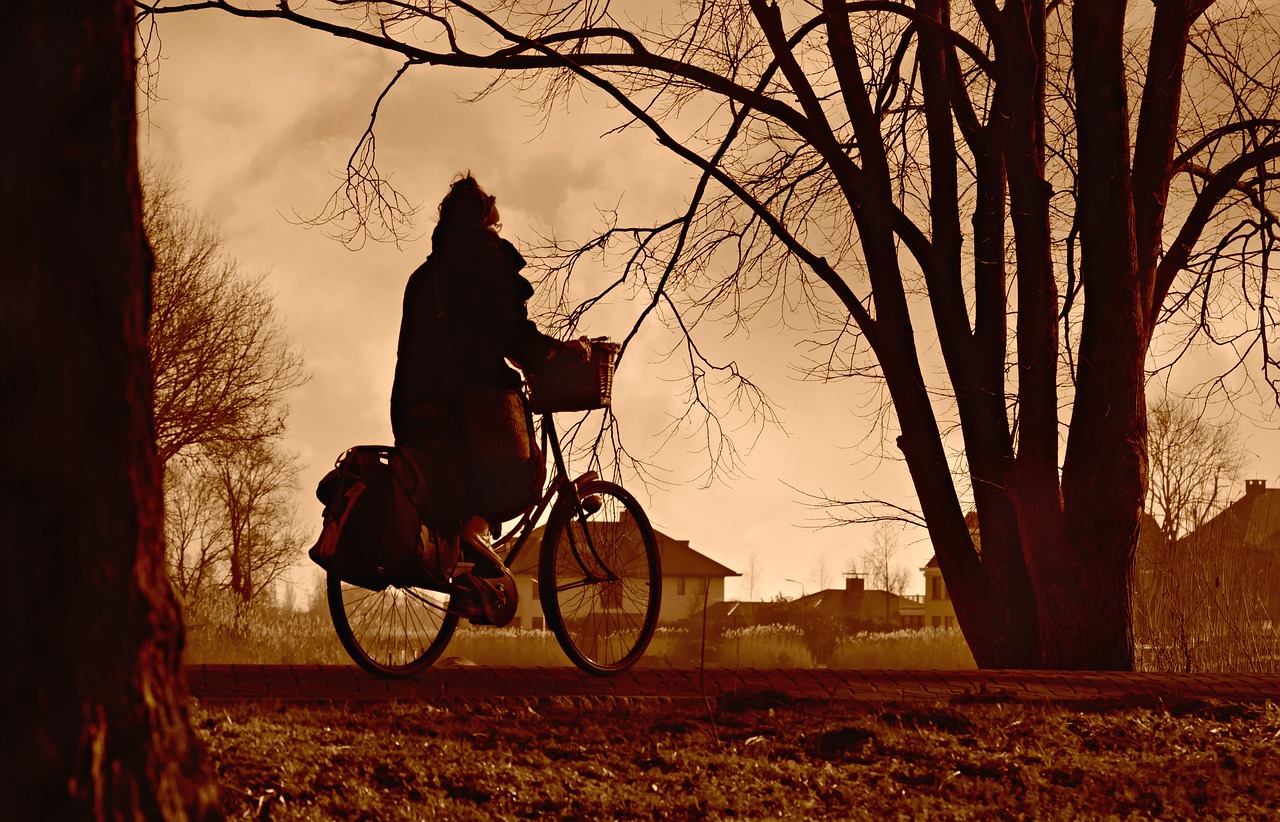
Lane Positioning
When it comes to cycling, is more than just a matter of comfort; it’s a crucial element of safety. Imagine riding your bike as if you were a car—would you want to be squeezed into a narrow lane with no room to maneuver? Absolutely not! Proper lane positioning allows you to be more visible to drivers and gives you the space to react to unexpected situations. So, how do you find the best spot on the road?
First and foremost, you should aim to ride in a position that keeps you clear of the "dooring zone," which is the area next to parked cars where a driver or passenger might unexpectedly open a door. This zone can be particularly hazardous, so maintaining a distance of at least three feet from parked vehicles can help you avoid a nasty surprise. Additionally, riding further away from the curb can increase your visibility to both drivers and pedestrians.
Next, consider the flow of traffic. As a cyclist, you have the right to occupy a lane, but you should also be aware of how your positioning affects nearby vehicles. Riding in the center of the lane can be a great strategy, especially on narrow roads where passing is difficult. This tactic communicates to drivers that they need to change lanes to pass you safely, rather than trying to squeeze by. In contrast, on wider roads, you might choose to ride closer to the right side, allowing for smoother traffic flow while still keeping an eye on your surroundings.
It’s also important to stay alert and adjust your lane position based on conditions. For instance, if you’re approaching a turn or an intersection, you should move towards the center of the lane to signal your intention to turn. Similarly, if there are obstacles like potholes, debris, or even pedestrians, don’t hesitate to shift your position to avoid them. Remember, your safety comes first!
In summary, effective lane positioning involves:
- Staying clear of parked cars to avoid dooring accidents.
- Riding in the center of the lane on narrow roads to ensure safety.
- Adjusting your position based on road conditions and traffic flow.
By mastering lane positioning, you’ll not only enhance your own safety but also contribute to a more harmonious relationship with other road users. Think of yourself as a conductor in an orchestra, guiding the flow of traffic with your actions. When you ride confidently and clearly, everyone benefits!
- What is the best position to ride in traffic? Aim for the center of the lane on narrow roads and adjust based on traffic conditions.
- How far should I stay from parked cars? Maintain at least three feet of distance to avoid dooring hazards.
- Can I ride on the sidewalk? This depends on local laws; many areas prohibit it, especially in busy urban settings.
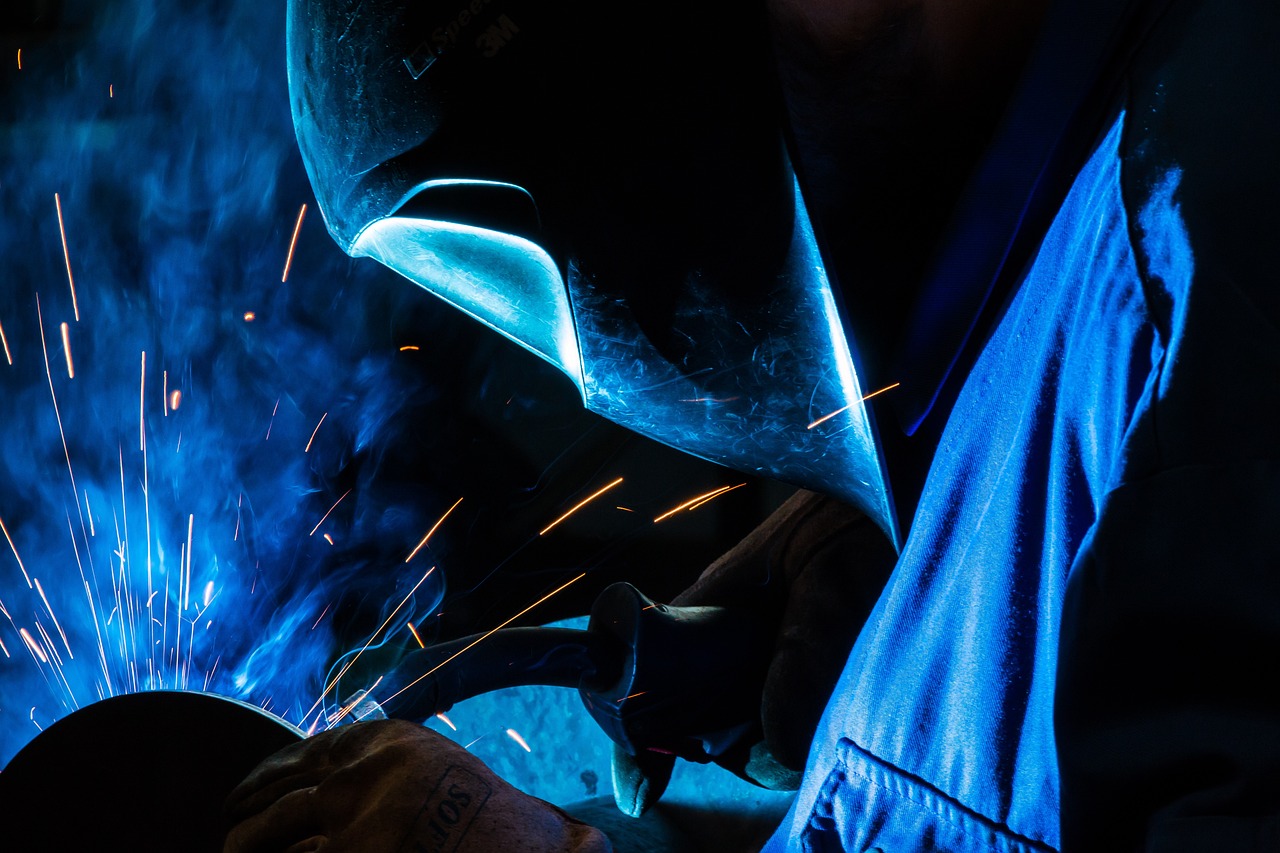
Using Hand Signals
When it comes to cycling, communication is key. Just like a conductor guides an orchestra, cyclists must communicate their intentions to drivers and fellow riders to create a harmonious experience on the road. Hand signals are an essential part of this communication, allowing you to convey your movements without uttering a single word. Think of them as your personal traffic lights—clear, concise, and crucial for safety.
Using hand signals not only helps to keep you safe but also promotes a culture of awareness among all road users. When you signal, you’re not just indicating a turn or a stop; you’re actively participating in the traffic ecosystem. Imagine riding alongside a friend who suddenly veers left without warning. It’s startling, right? Now, imagine if they had signaled their intention beforehand. That’s the power of hand signals!
Here’s a quick rundown of the most common hand signals every cyclist should know:
- Left Turn: Extend your left arm straight out to the side.
- Right Turn: Extend your right arm straight out to the side or bend your left arm at a 90-degree angle upwards.
- Stopping: Extend your left arm downwards, palm facing back.
Practicing these signals will make them second nature, allowing you to focus more on the road and less on remembering the correct gestures. It’s like learning to ride a bike—once you get the hang of it, it becomes instinctive!
But remember, signaling is only effective if you do it in a timely manner. Signal your intent well before you actually make the maneuver. This gives drivers ample time to react and adjust their speed or position if necessary. Picture it like a dance: you wouldn’t just start spinning without warning your partner first, right? Timing is everything!
Moreover, it’s essential to maintain a firm grip on your handlebars while signaling. You don’t want to lose control of your bike while trying to communicate. So, practice signaling with one hand while keeping the other steady on the handlebars. It might feel awkward at first, but with practice, you’ll find your balance.
In addition to hand signals, consider making eye contact with drivers when it’s safe to do so. A simple nod or wave can reinforce your intentions and build trust. Think of it as a friendly handshake before you both go your separate ways on the road.
Ultimately, using hand signals is about creating a safer environment for everyone. By signaling your movements, you’re not just looking out for yourself but also for those around you. It’s a small gesture that can have a big impact. So, the next time you hit the road, remember to signal, smile, and ride with confidence!
Q: Why are hand signals important for cyclists?
A: Hand signals are crucial for communicating your intentions to drivers and other cyclists, helping to prevent accidents and ensuring a smoother flow of traffic.
Q: How can I remember the different hand signals?
A: Practice makes perfect! Rehearse the signals regularly until they become second nature. You can also create a visual reminder on your bike.
Q: Is it necessary to signal in all situations?
A: Yes! Even in low-traffic areas, signaling helps establish good habits and promotes safety for everyone on the road.
Q: Can I signal while riding in a group?
A: Absolutely! In fact, it’s even more important to signal in a group setting to ensure everyone is aware of the group's movements.
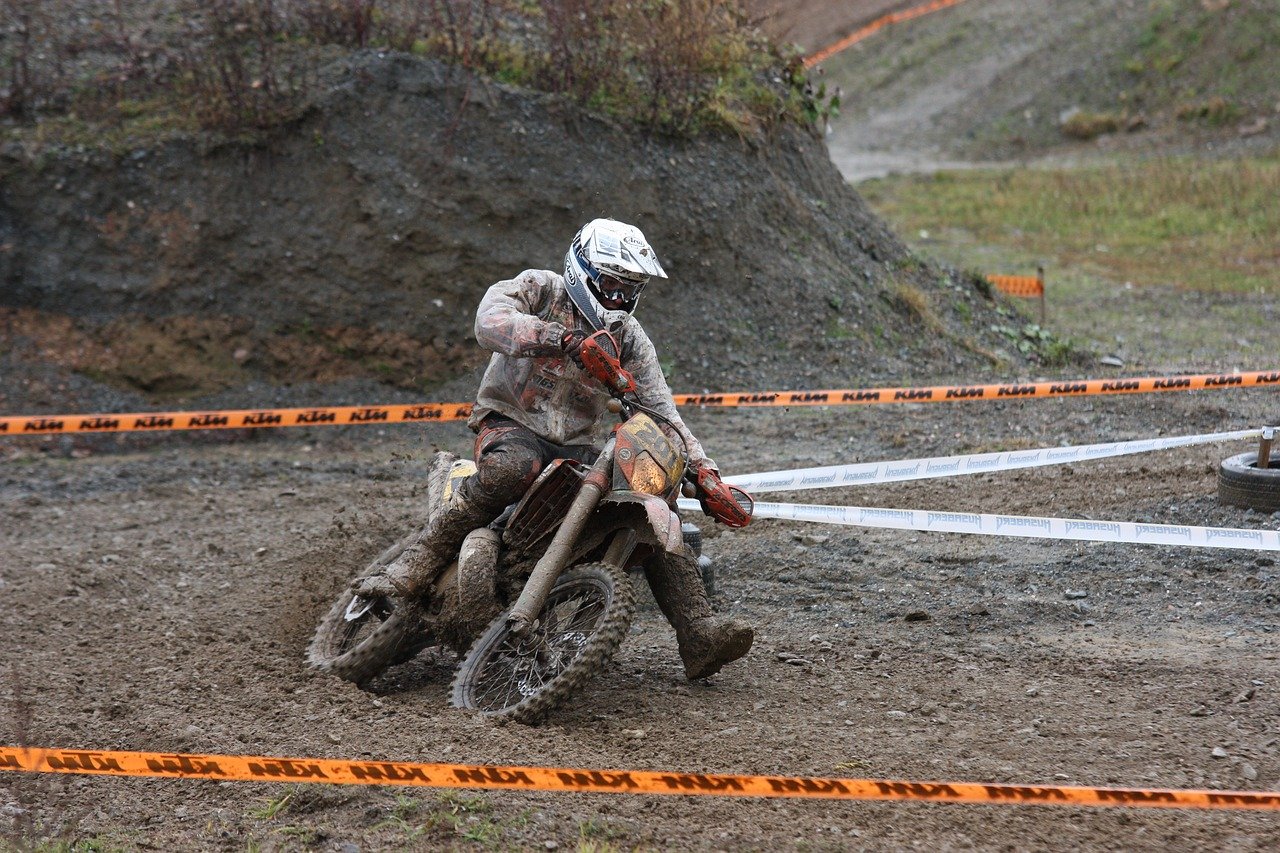
Maintaining Your Bicycle
Keeping your bicycle in top shape is not just about performance; it’s a critical aspect of safety. Regular maintenance can prevent accidents and ensure that your rides are smooth and enjoyable. Think of your bicycle as a finely tuned machine that requires attention and care. Just like a car needs oil changes and tire rotations, your bike needs its own routine checks to function properly. So, what should you be looking for? Let's break it down!
First and foremost, one of the most important aspects of bicycle maintenance is checking the tires. Proper tire pressure not only enhances your riding experience but also significantly affects your safety. If your tires are under-inflated, you risk pinch flats and poor handling, especially on turns. Conversely, over-inflated tires can lead to blowouts. Aim to check your tire pressure before every ride. Most tires have a recommended pressure range printed on the sidewall. Use a reliable pump with a gauge to ensure you’re hitting that sweet spot.
Next up, let’s talk about the tread. The tread on your tires provides the necessary grip and traction. If you notice that the tread is worn down or if you can see the threads of the tire, it’s time to replace them. A good rule of thumb is to check the tires for any cracks or bulges as well. Remember, your tires are your only contact with the road; treat them well!
Now, let’s move on to the brakes. Functional brakes are a non-negotiable when it comes to cycling safety. You should regularly inspect both the front and rear brakes. Squeeze the brake levers to see how they respond. If they feel spongy or if the brakes don’t engage properly, it’s time to adjust or replace the brake pads. Additionally, check the brake cables for any fraying or wear. If they look worn out, replace them immediately to avoid any nasty surprises while riding.
Another critical component to maintain is the gear system. Smooth shifting is essential for a pleasant ride, especially when you’re tackling steep hills or navigating through traffic. Check the derailleur alignment and make sure the cables are not frayed. If you find that your gears are not shifting smoothly, you may need to adjust the tension on the cables or even lubricate the derailleur. A well-maintained gear system not only improves your efficiency but also enhances your overall cycling experience.
Lastly, don’t forget about the chain. A clean and lubricated chain can make a world of difference. Over time, dirt and grime can build up, causing unnecessary wear and tear. Regularly wipe down your chain with a clean cloth and apply a suitable lubricant. Remember, a well-lubricated chain reduces friction and helps your bike run more smoothly.
| Component | Check Frequency | Notes |
|---|---|---|
| Tire Pressure | Before every ride | Check recommended pressure on the tire sidewall |
| Tire Tread | Weekly | Look for wear and replace if necessary |
| Brakes | Weekly | Inspect pads and cables; adjust as needed |
| Gear System | Bi-weekly | Ensure smooth shifting and lubricate |
| Chain | Weekly | Clean and lubricate regularly |
By following these guidelines, you can ensure that your bicycle remains in optimal condition. Regular maintenance not only prolongs the life of your bike but also significantly enhances your safety on the road. Remember, a little effort goes a long way in keeping you safe while you enjoy the freedom of cycling!
- How often should I maintain my bike? Regular maintenance should be performed weekly, with more thorough checks bi-weekly.
- What tools do I need for basic bike maintenance? A basic toolkit should include tire levers, a pump with a gauge, a multi-tool, and lubricant.
- Can I maintain my bike myself? Absolutely! Most basic maintenance tasks can be done at home with a little guidance.
- When should I replace my tires? Replace your tires when the tread is worn down or if you notice cracks or bulges.

Tire Pressure and Tread
When it comes to cycling, are two of the most critical factors that can significantly impact your safety and performance on the road. Imagine riding a bike with flat tires; it’s not just uncomfortable, it can also be dangerous! Proper tire pressure ensures that your bike rolls smoothly and efficiently, while adequate tread provides the necessary grip on various surfaces. So, how do you keep your tires in tip-top shape? Let’s break it down!
First off, checking tire pressure should become a part of your pre-ride routine. Most bike tires have a recommended pressure range printed on the sidewall, typically measured in PSI (pounds per square inch). A simple pressure gauge can help you determine if your tires are adequately inflated. Riding with under-inflated tires increases rolling resistance, which means you’ll have to work harder to pedal. Plus, it raises the risk of pinch flats—those annoying punctures that happen when the tire compresses against the rim. On the flip side, over-inflated tires can lead to a harsh ride and increased susceptibility to blowouts.
Now, let’s talk about tread. The tread on your bike tires plays a crucial role in providing traction, especially on wet or uneven surfaces. If you notice that the tread is worn down or uneven, it’s time to consider replacing your tires. A simple way to check the tread is to perform the “penny test.” Insert a penny into the grooves of the tire. If you can see the top of Lincoln’s head, it’s a sign that your tread is too worn, and you should look for new tires. Remember, having good tread not only enhances your grip but also improves your overall handling and control.
To help you visualize the importance of tire maintenance, here’s a quick table summarizing how tire pressure and tread affect your ride:
| Aspect | Impact of Poor Maintenance | Recommended Action |
|---|---|---|
| Tire Pressure | Increased rolling resistance, risk of pinch flats, blowouts | Check pressure before every ride; inflate to recommended PSI |
| Tread Condition | Reduced traction, poor handling, risk of skidding | Inspect regularly; replace tires if tread is worn |
In summary, keeping an eye on your tire pressure and tread is not just about enhancing performance; it’s about ensuring your safety on the road. A well-maintained bike is your best ally in avoiding accidents and enjoying your ride. So, make it a habit to check your tires regularly, and you’ll be rolling smoothly and safely in no time!
- How often should I check my tire pressure?
It’s best to check your tire pressure before every ride, especially if you haven’t used your bike in a while. - What should I do if I notice uneven tread wear?
If you notice uneven wear, it’s advisable to replace your tires. This can prevent accidents caused by poor traction. - Can I use a car tire pump for my bike tires?
While some car pumps can work, it’s recommended to use a pump specifically designed for bike tires to ensure accurate pressure.
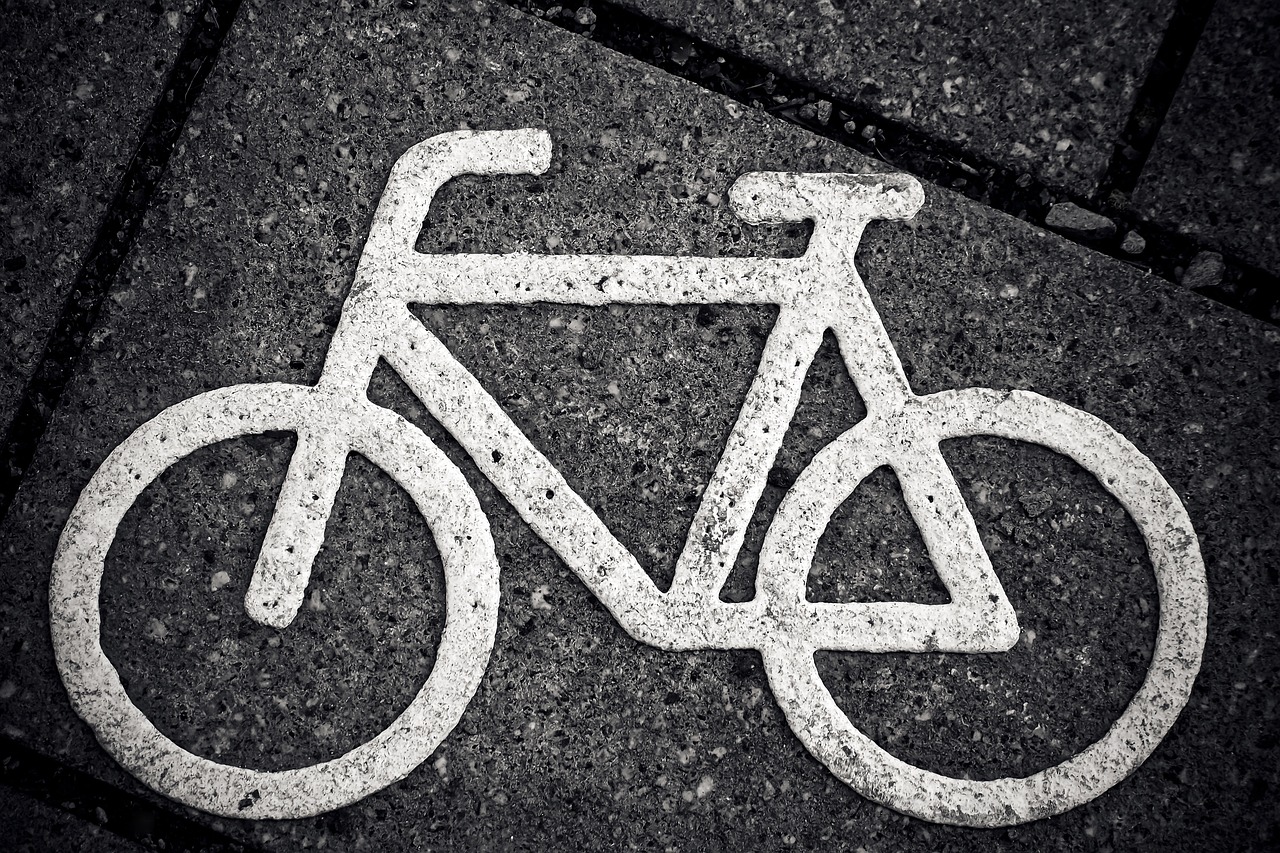
Brakes and Gears
When it comes to cycling, are not just components of your bike; they are your lifeline on the road. Imagine speeding downhill, the wind whipping through your hair, only to realize your brakes are unresponsive. Scary, right? That's why regular maintenance of these systems is crucial. A well-maintained bike can mean the difference between a smooth ride and a potential accident.
First off, let's talk about brakes. They come in various types, including rim brakes and disc brakes. Each has its own maintenance needs. For rim brakes, make sure the brake pads are not worn down and that they are properly aligned with the wheel rims. If you notice any squeaking or grinding noises, it's a clear sign that your brakes need immediate attention. On the other hand, disc brakes require regular checks of the rotor and pads. If your bike has hydraulic brakes, keep an eye on the fluid levels as well. A quick inspection can save you from a lot of trouble later.
Now, let’s shift gears—literally! Gears allow you to tackle different terrains with ease. Whether you're climbing a steep hill or cruising on a flat road, having functional gears is essential. Start by checking the gear shifting mechanism. If it feels sticky or unresponsive, it might be time for a cleaning or lubrication. Also, inspect the cables for fraying or rust, as these can lead to shifting issues. A well-tuned gear system not only enhances your performance but also makes your ride more enjoyable.
Here’s a quick table summarizing some essential checks for your brakes and gears:
| Component | What to Check | Frequency |
|---|---|---|
| Brakes | Brake pads, alignment, and fluid levels (for disc brakes) | Every ride |
| Gears | Cable condition, shifting mechanism, and lubrication | Weekly |
In conclusion, keeping your in top-notch condition is not just about performance; it's about safety. Regular maintenance can prevent accidents and enhance your cycling experience. So, before you hit the road, take a moment to ensure that your bike is ready for whatever adventure awaits!
- How often should I check my brakes and gears? It's best to check your brakes before every ride and your gears at least once a week.
- What signs indicate that my brakes need servicing? Look for squeaking sounds, unresponsive brakes, or uneven wear on brake pads.
- Can I fix brake and gear issues myself? Many minor issues can be fixed at home, but for complex problems, it's advisable to consult a professional.
Frequently Asked Questions
- What safety gear should I wear while cycling?
Wearing a helmet is non-negotiable for any cyclist. It protects your head in case of an accident. Additionally, consider wearing reflective clothing to enhance your visibility, especially during low-light conditions. Other gear like gloves, padded shorts, and cycling shoes can also improve your comfort and safety on the road.
- Do I need to know traffic laws as a cyclist?
Absolutely! Understanding traffic laws is crucial for your safety and the safety of others. Cyclists must follow the same rules as motor vehicles, including stopping at stop signs, obeying traffic signals, and yielding the right of way when necessary. This knowledge helps prevent accidents and keeps everyone on the road safer.
- How do I signal my intentions to drivers?
Using hand signals is a simple yet effective way to communicate with drivers. For instance, extending your left arm straight out signals a left turn, while bending your left arm at a 90-degree angle indicates a right turn. Always make sure to signal well in advance to give drivers time to react.
- What should I check on my bike before riding?
Before hitting the road, do a quick safety check on your bike. Ensure that your tires are properly inflated and have adequate tread. Check your brakes to make sure they’re functioning correctly and test your gears to ensure smooth shifting. Regular maintenance can prevent breakdowns and accidents.
- How can I stay safe at intersections?
Intersections can be tricky for cyclists. Always approach them with caution and be prepared to stop. Look out for turning vehicles and use hand signals to indicate your next move. If you're unsure, it’s safer to dismount and walk your bike across the intersection.
- What is the importance of lane positioning?
Proper lane positioning is vital for visibility and safety. Riding in the correct part of the lane can help drivers see you better and give you more space. Generally, you should ride in the center of the lane when it’s too narrow for a car to pass safely, and always stay clear of the door zone when riding near parked cars.








